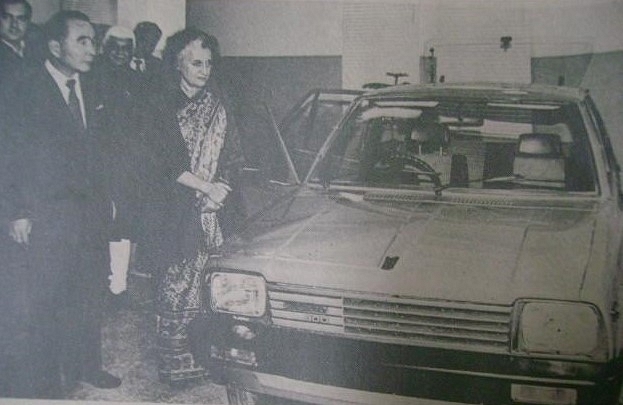
Big Questions On The Small Car
The Government has been hesitating for a long time over the small car project. Questions are raised about the need for it, the price of the car, who is to undertake it, the market for the car, and the follow-up measures that must be taken by the Government.
Many economists argue that production of a small car will not help to solve our burning economic problems. The same attention and resources can be diverted to break some of our seemingly insuperable economic obstacles. It is relevant to quote the view of Thomas Balogh, expressed in The Economics of Poverty:
By introducing the new model a new want is created, social pressure to obtain a vehicle widened, savings decreased, credit control made more difficult, and an additional conspicuous social distinction is created, causing disharmony. Thus, quite apart from the unfavourable implications for resource allocation and productivity, a positively harmful influence is created on the demand side ... the creation of a new want is directly hostile to saving and accumulation and impairs the growth of the economy. In particular care should be taken now not to introduce into Indian society the social escalation of material desires which has led to such frustration in the highly developed countries of the West. A better balance between work, leisure, material income and satisfaction, and between private and collective consumption, must be striven for. This will not only make India a better balanced society than now exists in the West but will hasten the day when a satisfactory minimum standard of life for the great multitude of the Indian people can be achieved.
Much time has been consumed in taking a decision on this project. This has caused waste of energy and money. Our Government is notorious for taking a long time to give permission to start industries. Last year a Japanese delegation remarked, "In Malaysia it takes two years to start a factory—in India it takes two years to get permission to start a factory."
Mr J. R. D. Tata has pointed out the cost of delayed decision:
There are many ways, direct and indirect, in which delays cause losses to the country. In the case of the delayed licensing of a project, the most obvious one is the foreign exchange expended on imports which indigenous production could have replaced. The cost of such imports, less the cost of imported raw materials, clearly represents a foreign exchange loss to the country caused by the delay in licensing the project. In the case of the Tata Fertilizer Project, this comes to Rs 25 lakhs per day of delay. As there have already been at least 300 of them, the loss up to now is some Rs 75 crores.
In the case of the small car project the loss is of course less dramatic. Still, the longer the delay the bigger will be the capital cost and the higher the price of the car.
An important question is the price of, the finished small car. The public have been thinking of a price between Rs 5,000 and Rs 6,000. That may have been realistic ten or fifteen years ago, but it is next to impossible now to produce a car within that price. The great rise in the general price level will inevitably make these cars costlier than that. Further, the Indian automobile industry is heavily taxed by the Central and State Governments. In February 1967, direct and indirect taxes and duties formed 42 to 47 per cent of the ex-factory prices of passenger cars and jeeps, 43 to 49 per cent in the case of commercial vehicles, and 36 to 38 per cent in the case of motor cycles and scooters. Since then these percentages have gone up somewhat. According to the Keskar Committee, taxes have become a definite disincentive to the healthy development of road transport. The taxes on motor vehicles have increased faster than any other taxes. In 1950-51 taxes on motor, vehicles formed 6.15 per cent of the total tax revenue. It increased to 8.55 per cent in 1959-60, and in 1965-66 to 13.33 per cent of the total tax revenue.
The Planning Commission has estimated that the country can absorb an output of 50,000 cars per annum. This estimate is not convincing. Such a demand could be maintained for a few years, but fairly soon cars would be surplus. A car is a costly item not only to purchase but to maintain and run.
The roads are not in a condition to take many more cars year after year. The road network has increased from 385,971 km in 1947, to 928,200 km in 1967. However, the total length of surfaced roads is only 290,000 km. This is about 8.86 km per 100 sq km of area, as against 47.7, 137.1, 141.8 in the USA, France and UK respectively. This limits the scope for the automobile in our country. The Government is very reluctant to spend more money on road building.
Before introducing the small car we should think about the problems of air pollution and road safety. In India, in 1965 there were a total of 72,057 road accidents, in which 8,392 persons were killed and 42,698 injured. The number of persons killed each year per hundred vehicles is one each in the UK, West Germany and the USA, but eight in India. Will the small car add fuel to this fire?
This article was authored by S Nakkiran and was published in the 10 October 1970 edition of Swarajya.